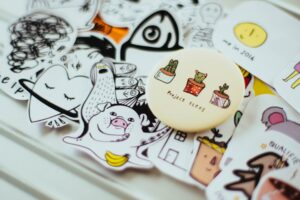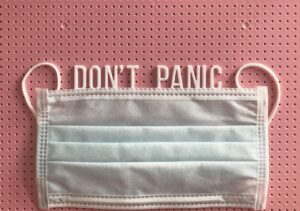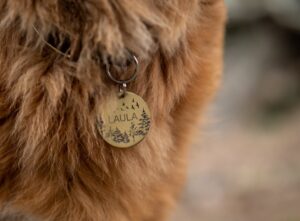Creating Adorable Art with Chibi Base
Chibi art is a style of drawing that originated in Japan and is characterized by its cute and exaggerated features. The word “chibi” translates to “short” or “small” in Japanese, and it is often used to describe characters that are drawn in a super deformed style, with large heads and small bodies. Chibi art has become increasingly popular in modern culture, with its adorable and playful aesthetic capturing the hearts of people around the world.
The history of chibi art can be traced back to the early 20th century in Japan, where it was first seen in manga and anime. Artists began drawing characters in a simplified and exaggerated style to evoke a sense of cuteness and charm. Chibi characters quickly gained popularity among fans, and their popularity continued to grow as they appeared in various forms of media, such as video games, merchandise, and even fashion.
In modern culture, chibi art has become a staple in the world of fandoms. Fans often create chibi versions of their favorite characters from movies, TV shows, video games, and more. Chibi art has also made its way into mainstream media, with companies using chibi characters in advertising campaigns and product designs. The appeal of chibi art lies in its ability to make even the most intimidating or serious characters look adorable and approachable.
Key Takeaways
- Chibi art is a style of drawing that features cute, exaggerated characters with large heads and small bodies.
- Understanding proportions and features is key to creating successful chibi art.
- Choosing the right tools and materials, such as markers and colored pencils, can enhance your chibi art.
- A step-by-step guide can help beginners create their own chibi characters.
- Adding personality and emotions to your chibi art can make your characters more engaging.
The Basics of Chibi Drawing: Understanding Proportions and Features
When it comes to drawing chibi characters, understanding proportions is key. Chibi characters are known for their exaggerated features, with large heads and small bodies. The head of a chibi character is typically about one-third the size of the body, giving them a cute and childlike appearance. The limbs are also shorter and stubbier than those of a realistic human figure.
In addition to proportions, chibi characters have simplified features that contribute to their cute and appealing look. The eyes are often large and round, with a simple dot or line for the pupil. The nose is usually just a small dot or a simple curve, and the mouth is often represented by a small line or a simple smile. Chibi characters also have simplified hair, with fewer details and more stylized shapes.
To achieve a cute and appealing chibi style, it’s important to pay attention to the overall shape and proportions of the character. Experiment with different head shapes and body proportions to find a style that you like. Don’t be afraid to exaggerate features and make them larger than life. Remember, the goal is to create a character that is adorable and charming.
Choosing the Right Tools and Materials for Chibi Art
When it comes to creating chibi art, there are various tools and materials that you can use. Whether you prefer traditional or digital art, there are options available to suit your preferences.
For traditional chibi art, you will need paper, pencils, erasers, and coloring materials such as markers or colored pencils. It’s important to choose high-quality materials that will allow you to achieve the desired effects. Smooth paper is recommended for drawing chibi characters, as it allows for clean lines and easy blending of colors.
If you prefer digital art, you will need a drawing tablet and software such as Adobe Photoshop or Clip Studio Paint. A drawing tablet allows you to draw directly on the screen, giving you more control over your artwork. There are various brands and models of drawing tablets available, so do some research to find one that suits your needs and budget.
When selecting tools for your chibi art style, consider factors such as line quality, color vibrancy, and ease of use. Experiment with different tools and materials to find what works best for you and your desired chibi art style.
Step-by-Step Guide to Creating a Chibi Character
Creating a chibi character can be a fun and rewarding process. Here is a step-by-step guide to help you get started:
1. Sketching the basic shape of the Chibi character: Start by sketching a circle for the head and a simple oval or rectangle for the body. Keep in mind the proportions of a chibi character, with the head being about one-third the size of the body. Add guidelines to help you place the facial features and limbs.
2. Adding details and features to the Chibi character: Once you have the basic shape, start adding details such as eyes, nose, mouth, and hair. Remember to keep the features simplified and exaggerated for a cute and chibi look. Play around with different eye shapes and hairstyles to give your character personality.
3. Coloring and shading the Chibi character: Once you are satisfied with the line art, it’s time to add color to your chibi character. Choose colors that complement each other and bring out the cuteness of your character. Use shading techniques such as hatching or blending to add depth and dimension to your artwork.
Remember, practice makes perfect, so don’t be discouraged if your first few attempts don’t turn out exactly as you envisioned. Keep experimenting and refining your technique, and soon you’ll be creating adorable chibi characters with ease.
Adding Personality and Emotions to Your Chibi Art
One of the great things about chibi art is its ability to convey emotions and personality through simple and exaggerated features. Here are some tips for adding personality and emotions to your chibi art:
1. Tips for conveying emotions through Chibi art: Experiment with different eye shapes, mouth expressions, and body language to convey different emotions. For example, large round eyes can make a character look innocent or surprised, while slanted eyes can give them a mischievous or sly look. The position of the eyebrows can also play a role in expressing emotions.
2. Adding accessories and props to enhance the character’s personality: Accessories and props can help enhance the personality of your chibi character. For example, a character with a bow in their hair might be seen as cute and girly, while a character with a sword might be seen as strong and determined. Think about what accessories or props would best represent the personality of your character.
3. Examples of Chibi characters with unique personalities: Take inspiration from existing chibi characters that have unique personalities. Look at how their features and expressions contribute to their overall personality. For example, Pikachu from Pokémon is known for its cute and mischievous expression, while Hello Kitty is known for her sweet and innocent look.
By paying attention to the details and using different techniques, you can bring your chibi characters to life and make them more relatable and engaging.
Creating Chibi Fan Art: Tips and Tricks

Creating chibi fan art is a popular way for fans to express their love for their favorite characters. Here are some tips and tricks for creating chibi fan art:
1. Tips for creating Chibi fan art of popular characters: When creating chibi fan art, it’s important to capture the essence of the original character while still maintaining the chibi style. Study the original character’s design and identify their key features, such as their hairstyle, clothing, or accessories. Then, incorporate these elements into your chibi version of the character.
2. Legal considerations when creating Chibi fan art: It’s important to be aware of copyright laws when creating chibi fan art. While creating fan art is generally considered a form of expression and is often tolerated by copyright holders, it’s always best to seek permission or create original characters if you plan on selling your artwork or using it for commercial purposes.
3. Examples of Chibi fan art from popular franchises: Take inspiration from existing chibi fan art from popular franchises. Look at how other artists have interpreted the characters in a chibi style and see if there are any techniques or ideas that you can incorporate into your own artwork.
Remember, creating chibi fan art is a way to show your love and appreciation for a particular character or franchise. Have fun with it and let your creativity shine!
Chibi Art Styles: Exploring Different Techniques and Variations
Chibi art comes in various styles and variations, each with its own unique characteristics. Here are some examples of different chibi art styles:
1. Different Chibi art styles from around the world: Chibi art is not limited to Japan; it has gained popularity worldwide, and artists from different countries have put their own spin on the style. For example, in South Korea, there is a style called “Kawaii” that focuses on creating cute and lovable characters. In the West, artists often combine chibi elements with other art styles to create unique and eye-catching artwork.
2. Techniques for creating unique Chibi art styles: Experiment with different techniques to create your own unique chibi art style. Play around with line thickness, shading techniques, and color choices to give your artwork a distinct look. Don’t be afraid to think outside the box and try new things.
3. Examples of Chibi art styles and variations: Take inspiration from different artists and their chibi art styles. Look at how they use different techniques and elements to create their own unique interpretations of chibi characters. By studying different styles, you can expand your artistic repertoire and develop your own signature chibi art style.
Using Chibi Art in Design: Examples and Inspiration
Chibi art can be used in various design projects, from product design to marketing materials. Here are some examples of how chibi art can be incorporated into design:
1. Examples of Chibi art used in product design and marketing: Chibi art is often used in the design of merchandise, such as t-shirts, keychains, and plush toys. Companies also use chibi characters in their marketing materials, such as posters, flyers, and social media graphics. Chibi art can help create a fun and playful image for a brand or product.
2. Tips for incorporating Chibi art into your design work: When incorporating chibi art into your design work, consider the overall style and aesthetic of the project. Chibi art can be used as a focal point or as a decorative element. Experiment with different compositions and layouts to find the best way to incorporate chibi art into your design.
3. Inspiration for using Chibi art in your design projects: Look for inspiration from existing designs that incorporate chibi art. Study how other designers have used chibi characters to enhance their designs and think about how you can apply similar techniques to your own projects.
By incorporating chibi art into your design work, you can add a touch of cuteness and playfulness to your designs, making them more engaging and appealing to your target audience.
Chibi Art for Beginners: Common Mistakes to Avoid
As with any form of art, there are common mistakes that beginners often make when creating chibi art. Here are some common mistakes to avoid:
1. Common mistakes beginners make when creating Chibi art: One common mistake is not paying attention to proportions. It’s important to remember that chibi characters have exaggerated features, with large heads and small bodies. Another mistake is overcomplicating the details. Keep the features simple and stylized to maintain the cuteness of the character.
2. Tips for avoiding these mistakes and improving your Chibi art: Practice drawing chibi characters from different angles and perspectives to improve your understanding of proportions. Study reference images and observe how other artists simplify and stylize features in their chibi art. Don’t be afraid to make mistakes and learn from them.
3. Examples of Chibi art with common mistakes corrected: Look at examples of chibi art with common mistakes corrected to see how small adjustments can make a big difference. Pay attention to the proportions, features, and overall composition of the artwork.
By being aware of common mistakes and actively working to improve your skills, you can create chibi art that is more accurate and visually appealing.
Taking Your Chibi Art to the Next Level: Advanced Techniques and Challenges
Once you have mastered the basics of chibi art, you may want to challenge yourself and take your skills to the next level. Here are some advanced techniques and challenges to push your chibi art skills:
1. Advanced techniques for creating more complex Chibi characters: Experiment with more complex poses, dynamic compositions, and intricate details to challenge yourself. Try drawing chibi characters in action poses or interacting with each other to add more depth and complexity to your artwork.
2. Challenges to push your Chibi art skills to the next level: Participate in chibi art challenges or prompts to push yourself creatively. These challenges often provide prompts or themes for you to create chibi artwork based on specific criteria. They can help you explore new ideas, techniques, and styles.
3. Examples of advanced Chibi art and techniques to inspire your work: Look for examples of advanced chibi art and techniques to inspire your own work. Study how other artists use advanced techniques such as lighting, perspective, and texture to create stunning chibi artwork.
By challenging yourself and pushing your skills, you can continue to grow as an artist and create chibi art that is more intricate, detailed, and visually captivating.
In conclusion, chibi art is a popular style of drawing that has captured the hearts of people around the world. With its cute and exaggerated features, chibi characters have become a staple in modern culture, appearing in various forms of media and gaining popularity among fans. By understanding the basics of chibi drawing, choosing the right tools and materials, and incorporating personality and emotions into your artwork, you can create adorable and engaging chibi characters. Whether you’re a beginner or an advanced artist, there are always new techniques and challenges to explore to take your chibi art to the next level. So grab your pencils or tablets and start creating your own cute and charming chibi characters today!
If you’re a fan of chibi art and looking for a great resource to create your own chibi characters, look no further than PoolGecko. They have an amazing article on their website that provides a step-by-step guide on how to create a chibi base. Whether you’re a beginner or an experienced artist, this article will surely help you improve your chibi drawing skills. Check it out here and start creating adorable chibi characters today!
FAQs
What is a chibi base?
A chibi base is a simplified, cartoonish version of a character or object that is often used in anime and manga.
What is the purpose of a chibi base?
Chibi bases are often used as a starting point for artists to create their own chibi characters or to practice drawing chibi-style art.
How do I use a chibi base?
To use a chibi base, simply download or print the image and use it as a reference for drawing your own chibi character. You can also trace the base and modify it to create your own unique character.
Where can I find chibi bases?
Chibi bases can be found online through various art websites and forums. Some artists also create and share their own chibi bases on social media platforms.
Can I sell artwork using a chibi base?
It depends on the specific chibi base and its usage rights. Some chibi bases may be free to use for personal or commercial purposes, while others may require permission or payment to use in commercial artwork.
What are some tips for using a chibi base?
When using a chibi base, it’s important to pay attention to the proportions and anatomy of the character to ensure that it looks balanced and visually appealing. It’s also helpful to experiment with different poses and expressions to add personality to your chibi character.













Post Comment
You must be logged in to post a comment.